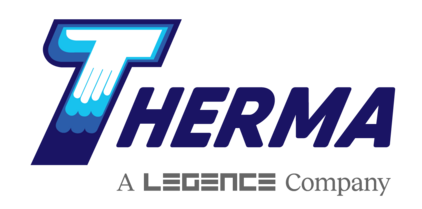by Ali Kriscenski
Modern building envelopes have been designed as thermal barriers that also protect interior components from weather and humidity. As weathertight elements they create the need for mechanical ventilation to remove exhaust air out of conditioned spaces. While removing exhaust air, these channels carry thermal energy that can be recovered with ERV (energy recovery ventilation) or HRV (heat recovery ventilation) devices.
What are ERV and HRV Systems?
Recapturing energy as it enters or exits a building’s ventilation system has been a component of energy efficiency strategies since the 1970s. As building envelopes developed into increasingly airtight components, mechanical ventilation has become a necessity. While standard construction has typically used exhaust-only ventilation for removing air from bathrooms, kitchens, or equipment, HRV and ERV are used to transfer energy (recover) from exhaust and increase energy efficiency. Here’s how to distinguish between ERV and HRV.
Purpose of ERV and HRV
Both ERV and HRV systems draw fresh air into buildings, providing make-up air and improving indoor air quality. For example, kitchen exhaust hoods move gasses, humidity and odors out of living spaces to prevent contamination. An ample supply of make-up air – fresh air drawn from outside – can help exhausts function efficiently and prevent backdrafting. An ERV or HRV system can help condition make-up air to maintain optimal environmental conditions and improve energy efficiency.
How HRV works
HRV devices use the thermal energy from exhaust air to preheat or pre-cool incoming fresh air and reduce energy consumption. With an HRV, outgoing air and incoming fresh air pass in separate channels without mixing. A heat exchanger transfers thermal energy in the outgoing air to the incoming, unconditioned air. By raising or lowering the temperature of the incoming air, less energy is required to bring fresh air up to the existing conditioned environment. HRVs are typically between 55% – 75% efficient in transferring thermal energy and, depending on the model, can be as high as 85% – 90% efficient.
How ERV works
In principle, ERVs are similar to HRVs except they transfer thermal energy and moisture between air streams. ERVs typically provide higher efficiency of energy transfer than HRVs, up to 99%. Additionally, the capacity to recover or dispense moisture helps maintain optimal indoor conditions by contributing to relative humidity conditions. ERVs can add or remove moisture, acting as a whole-house humidifier or dehumidifier.
How To Select the Best Option for Your Building or Facility
The selection between ERV or HRV options depends on a few variables including local climate, type of HVAC system, age of the building and building or facility program.
Climate
The difference between HRV and ERV systems is mainly the capability to exchange moisture between incoming and outgoing air streams. This makes ERV systems a better option in locations where seasonal changes in humidity occur.
Type of HVAC system
Different types of HVAC systems (air conditioners and furnaces) produce varying environmental conditions. Radiant heat, for example from electric systems, tends to be drier than thermal energy distributed through forced air systems with boilers.
Age of building
As building envelopes have become more airtight in the last 40 years, newer buildings maintain indoor environmental conditions more consistently. Mechanical ventilation which helps add or remove moisture can be effective for older buildings where conditioned air infiltrates through the building envelope.
Building Program
The program within a building or facility is also a factor in deciding between an ERV or HRV system. Environments that require stricter environmental conditions, such as healthcare or Current Good manufacturing practices (CGMP) facilities, can benefit from ERVs to maintain optimal temperature and relative humidity.
Expertise in Energy Efficiency
When looking at opportunities to increase energy efficiency, ERV and HRV systems can provide a practical, cost-effective way to improve building performance. These devices can help improve indoor air quality (IAQ), improve HVAC efficiency and provide higher thermal comfort. An HVAC expert can help you assess your existing system, define your energy efficiency goals and select the right system for your building or facility. Contact Therma today to learn more.
Ali Kriscenski was trained in high-performance building design at Boston Architectural College. She has worked with leading architecture and construction firms in NYC and New England and served on the executive team at the Forest Stewardship Council International. She was the managing editor at Inhabitat and has worked pro bono for the Green Building Institute, ISEAL Alliance and Habitat for Humanity.
Sources
Green Building Advisor – The Building Envelope
GreenBiz – Here’s how to scale energy-saving commercial building retrofits
Engineering.com – Energy Recovery: How it Shapes Today’s Buildings
U.S. Department of Energy (DOE) – Commercial Buildings









